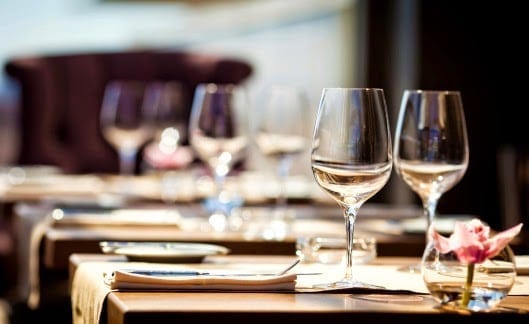A friend who’s been living in Hong Kong is about to return to London, and he’s excited about rediscovering the capital’s restaurant scene. Hong Kong was all very well, he says – you could get just about any kind of cuisine you liked there. But it all felt a bit transplanted, a bit unreal, a bit “Disneyfied”. He’s looking forward to the “authentic” world of London dining.
I fear he may be disappointed.
Years ago I worked for a tour operator and spent a week on a ‘familiarisation trip’ to Disney World. (Yes, it was a massive jolly.) One afternoon I visited Epcot, one of the Disney World theme parks and home to the World Showcase, where you can ‘visit’ a re-creation of a random selection of countries, admire their national costumes, behold their national monuments – and eat their national cuisines.
At Epcot, Japan has the Katsura Grill, France has Les Halles Boulangerie Patisserie, and the UK has not one but two restaurants: the Rose & Crown Pub and Dining Room, and the Yorkshire County Fish Shop. Even the least cynical British visitor will struggle to resist a chuckle at all this, if not a sneer. Words such as ‘inauthentic’, ‘plastic’ and ‘clichéd’ will be muttered. And they may well be justified.
But is Epcot any less authentic than the current London dining scene?
London restaurants these days, in the manner of Epcot, offer lovingly re-created versions of other nations’ culinary national treasures: the Barcelona-style tapas bar, the downhome US barbecue joint, the backstreet Korean grill… They are designed down to the last detail with Disney-like precision to give you the feeling of the places they ape but, like in Disney World, they’re a bit cleaner, less rough around the edges. More designed. More perfect. Less real. And like the Disney restaurants, the London re-creations are usually much more expensive than the places they were inspired by.
London’s dining scene is Epcot to the power of ten, with many more countries represented and the zeal for exact design replication extending to absurdities such as deliberately scruffy uniforms for waiters and fake grafitti. The kind of sniffy Londoners who would rather take a one-way trip to the Dignitas clinic in Switzerland than visit Epcot will happily sit down in London’s West End or East End in a faux Mumbai café or Venetian bàcaro and pay through the nose for ersatz fare in an ersatz setting. It’s like something out of a JG Ballard novel.
That’s not to say the food isn’t good in these places. On the whole, it is. And we wouldn’t want to go back to the dark, post-war days, when London’s cuisine was a thing for foreigners to poke fun at. (In the Sixties, Michael Caine’s Londoner spy, Harry Palmer in The Ipcress File, was regarded as a gourmet because he cooked with French mushrooms – from a tin.)
But where has this current restaurant scene come from? And where is it going? In what way is it different, particular to London? Great cities’ restaurant scenes evolve out of their histories: handed-down traditions, the centuries of trade with other nations, successive waves of immigration, exciting young chefs with new ideas…
A restaurant scene that’s by its very nature a transplanted imitation can surely only be ephemeral, prone to the ever-changing demands of the dining public: “We’re bored of Lisbon-esque cherry-wine bars now – we want Jamaican rum shacks!” It can’t endure because it didn’t evolve in the first place. Like the ultra-authentic décor, it’s really only tacked on.
Maybe this is the future of dining. Maybe the globalisation of food that taste-makers used to mock when it was represented by McDonald’s has taken over everything now. Maybe it doesn’t really matter. But, faced with the choice between my local Lebanese, owned and run by a local Lebanese family, keenly priced and offering some of the best food I’ve ever eaten, and the latest Beirut-style workers’ café built of authentic imported corrugated iron and charging £6 for some houmous, I know which one I’ll go for any day…


